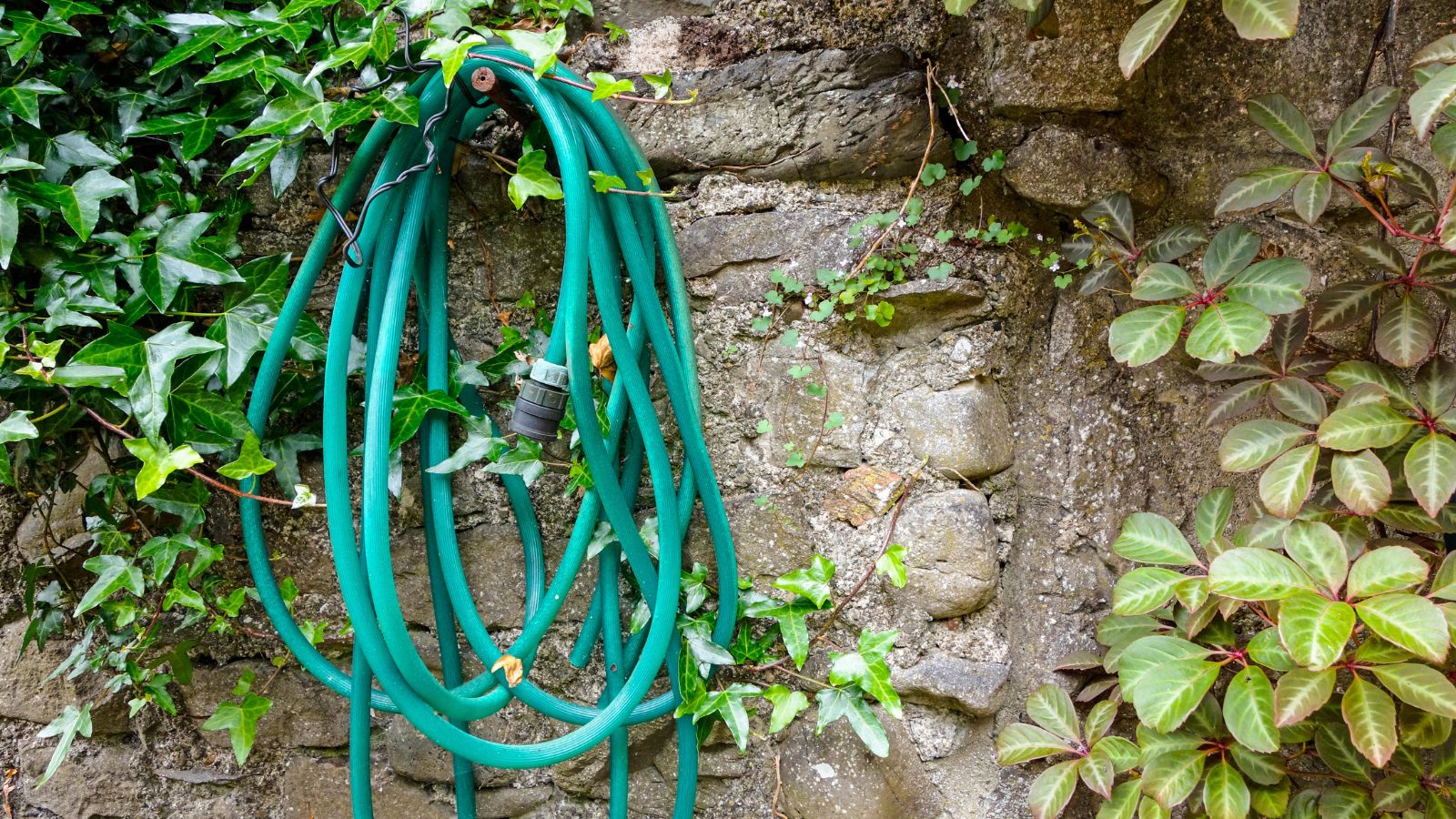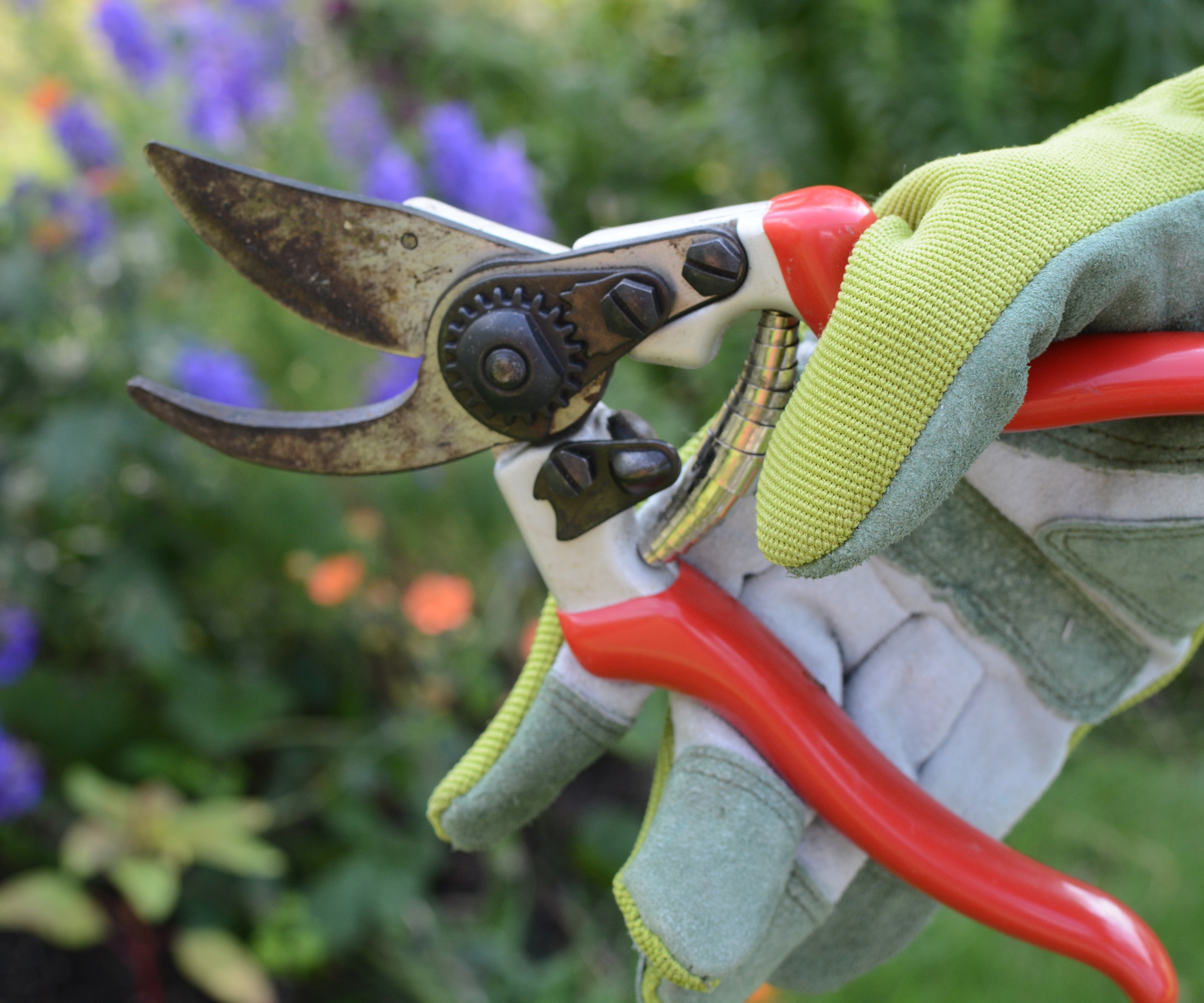How to reuse an old yard hose – 4 ways to repurpose a hose that actually work
Did you know you can turn a broken hose into a brand-new irrigation system?


There comes a time when even the most reliable yard hose springs a leak. After years or even decades of watering, every hose eventually stops working as it should.
But before you throw it in the trash, keep that old hose to hand. There are a handful of clever ways of reusing your garden hose around the yard as an alternative type of hose, as grips and guards for tools, or as protection for young trees.
However, the internet is stuffed with ways of reusing a hose that don't quite work or look a little tacky, like turning a hose into a mat or vase. These are the methods that are actually helpful in a yard.
1. Turn it into a soaker irrigation hose

One of the best ways of reusing an old hose is to convert it from a standard garden hose to a soaker hose. If your hose has a few holes leaking water, it's perfect for this project.
Unlike a standard hose, soaker hoses slowly seep water into the soil. Rather than dropping water on your plants at a height from a single nozzle, soaker hoses issue water along the entire length of the hose.
Homes & Gardens content editor and gardening expert Drew Swainston explains 'The idea is that this is a more efficient way of watering during hot summers. Rather than blasting dry soil with water that will quickly evaporate, soaker hoses allow water to penetrate deep into the soil and reach the roots of your plants. Unlike a standard hose, they don't dampen the leaves of your plants, reducing the risk of fungal disease from wet leaves.'
It's a simple procedure to convert the hose, but you need a little patience. Using a 1/4-inch drill bit, drill a hole through one side of the hose every few inches. This is the only real difficulty with this project. If you have a long 100ft hose, this can be a boring job, but it's not difficult. After that, add a hose cap like this from Amazon to the end of the hose.
Design expertise in your inbox – from inspiring decorating ideas and beautiful celebrity homes to practical gardening advice and shopping round-ups.
This will stop water coming out of the end of the hose and force it through all the little holes. Lay the hose along the length of your flowerbed or vegetable patch. Then, turn the spigot on at a very low pressure - this will keep the watering gentle and keep the hose from drowning your plants.

Drew qualified as a journalist and wrote for many websites and publications, before studying for a horticulture qualification. He worked as a professional gardener for several years, specializing in kitchen gardening. He's now bringing his expertise and passion to Homes & Gardens.
2. Cut sections as guards for sharp tools

Another way to reuse an old hose is as a guard for sharp tools. If you worry about the exposed blades of pruners, hedge shears, or hedge trimmers, an old hose can be perfect for keeping these tools safe.
Take a hose cutter like this on Amazon and trim the hose to length. If you don't have one of these, you can also use a utility knife, though the cut won't be as clean. Then, split the hose lengthways along one side. This will give you an open cylinder of rubber that you can wrap around the blades of your tools. This can help prevent rust and adds an extra layer of safety.
3. Reuse as grips for tools and buckets

One of the most common ways to reuse an old hose is to cut it up for grips for tools and buckets. If your wooden pruners or trowel is rubbing on your hands, you can use some lengths of garden hose as grips. You can also use these grips on other yard equipment like bucket and watering can handles, or the handles on a wheelbarrow.
Just like the blade guards above, take your hose and trim it to length with a hose cutter or utility knife. Make a cut along one side of the new hose lengths, then wrap them around the handles of whatever you want to hold. If your hose is the right width, you may not even need to make this second cut. Some hoses can fit straight onto pruner handles, but you need to measure, as the hose may be too narrow or unpliable to push onto the handle.
4. Protect against wire when staking trees
You need wire to properly stake a tree. When trees are young and growing, their roots aren't yet strong enough to hold up the tree. That can be a problem in stormy weather because the wind could uproot or snap the tree.
One of the best ways to support young trees is to use wire to tie them to T-stakes like these from Home Depot. Wire can cut into tree trunks and damage so the best way to secure them is to use nylon straps like these from Amazon. However, if you don't have a set of these on hand, you can use old lengths of yard hose.
Measure the length of the hose you need with a soft measure and cut it. Then thread the wire through the hose, then tie it to the T-stake. This will protect the tree from the wire, providing support.
While these methods are great, you still need to replace your original hose. However, before you buy a new one, consider if a standard garden hose is still the best watering method. Serious gardeners may find that other watering systems might be better for their yards. It's worth weighing up the benefits of a sprinkler vs a soaker hose, or a drip irrigation system vs a soaker hose. Swapping your hold hose out for these efficient systems might free up a yard chore and make for prettier plants and tastier vegetables.

As a gardens and lifestyle contributor, Alex makes sure readers find the right information to help them make the best purchase. Alex got his start in reviewing at the iconic Good Housekeeping Institute, testing a wide range of household products and appliances. He then moved to BBC Gardeners’ World Magazine, assessing gardening tools, machinery, and wildlife products.